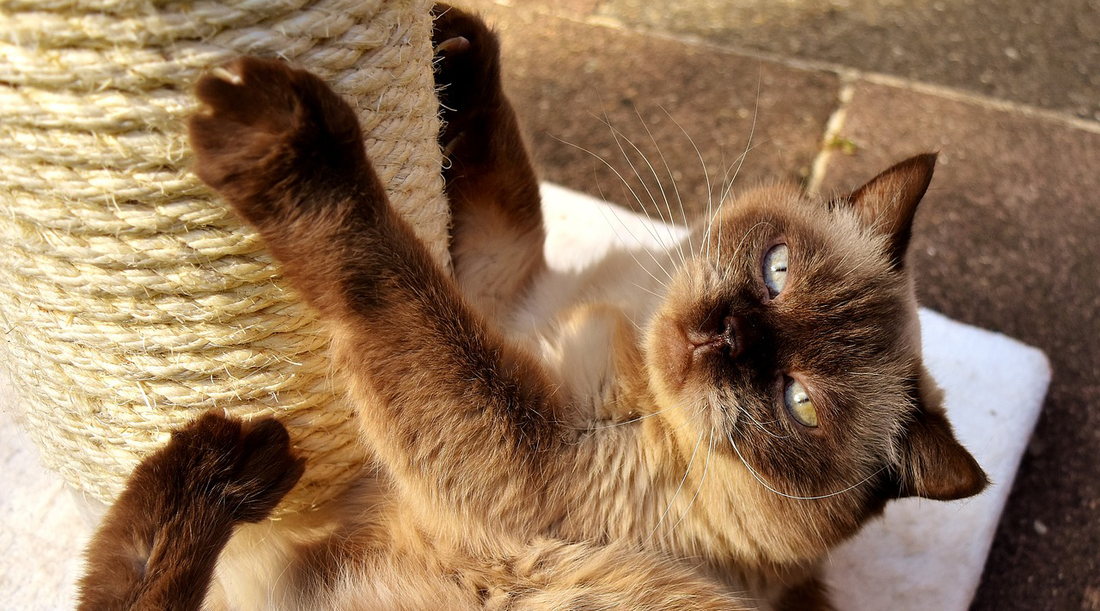
Cat Scratching Post Training Tips: Ensuring Your Feline Friend Stays Happy and Your Furniture Stays Intact
LifeSong StaffCats have an inherent need to scratch. This natural behavior helps them maintain their claws, mark territory, and stretch their muscles. Unfortunately, this can lead to shredded furniture if not properly managed. Training your cat to use a scratching post is essential for both your cat's well-being and your home’s condition. Here are some comprehensive tips to help you successfully train your cat to use a scratching post.
Understanding the Importance of Scratching
Before delving into training techniques, it's important to understand why cats scratch:
- Claw Maintenance: Scratching helps remove the outer layer of the claw, keeping them sharp and healthy.
- Territorial Marking: Cats have scent glands in their paws, so scratching leaves both a visual and a scent mark.
- Exercise and Stretching: Scratching allows cats to stretch their muscles and keep them toned.
- Stress Relief: Scratching can be a way for cats to release pent-up energy or stress.
Choosing the Right Scratching Post
The success of training your cat to use a scratching post often starts with selecting the right one. Consider the following factors:
- Height and Stability: The post should be tall enough for your cat to fully stretch out. It should also be stable and sturdy; a wobbly post can discourage use.
- Material: Cats prefer different textures. Sisal rope or fabric is usually a favorite, but some cats might prefer carpet or cardboard.
- Design: Some cats prefer vertical scratching posts, while others like horizontal ones. Offering a variety of options can cater to your cat’s preference.
- Location: Place the post in an area your cat frequents, especially near where they already like to scratch or rest.
Introducing the Scratching Post
- Placement: Start by placing the post near an area your cat already likes to scratch, such as next to a piece of damaged furniture.
- Encouragement: Gently encourage your cat to explore the post. You can do this by playing with them near it or rubbing catnip on the post to attract their interest.
- Positive Reinforcement: Praise and reward your cat with treats, petting, or playtime whenever they use the post. Positive reinforcement is crucial in helping them associate the post with good things.
- Mimic Natural Behavior: If your cat is hesitant, try gently placing their paws on the post and mimicking a scratching motion. Be gentle to avoid causing stress or fear.
Redirecting Unwanted Scratching
If your cat continues to scratch furniture or other unwanted areas, it's important to redirect this behavior without punishment.
- Covering Furniture: Temporarily cover the scratched areas with double-sided tape, aluminum foil, or plastic protectors. Cats dislike these textures and will likely avoid them.
- Blocking Access: If possible, block access to the furniture or area being scratched until your cat is consistently using the scratching post.
- Providing Alternatives: Ensure there are enough scratching posts or pads around your home. Cats often like to have multiple scratching options.
- Consistency: Be consistent in your redirection efforts. Every time you see your cat scratching the wrong thing, gently move them to the scratching post and encourage its use.
Maintenance and Upkeep
- Regular Checks: Ensure the scratching post remains stable and doesn’t become wobbly. A sturdy post is more appealing.
- Replacing Worn Posts: When the post becomes too worn out, replace it with a new one. Some cats may continue using a very worn post, while others might prefer a fresh one.
- Cleaning: Regularly clean the post to remove fur and dirt. However, avoid using strong-smelling cleaners as these might deter your cat.
Behavioral Considerations
- Understanding Individual Preferences: Just like humans, cats have individual preferences. Some might take to a scratching post immediately, while others may need more time and encouragement.
- Stress Factors: Stress can cause cats to scratch more or less. Changes in the household, new pets, or changes in routine can all impact your cat's scratching behavior.
- Providing Enrichment: Ensure your cat has plenty of mental and physical stimulation. A bored cat is more likely to engage in destructive scratching. Toys, interactive play, and environmental enrichment can all help.
Using Pheromone Sprays and Catnip
- Pheromone Sprays: Products like Feliway can mimic cat pheromones and make the scratching post more appealing.
- Catnip: Rubbing catnip on the scratching post can attract your cat and encourage its use. Not all cats respond to catnip, but for those that do, it can be very effective.
Patience and Persistence
Training a cat to use a scratching post takes time and patience. It's important to remain consistent and positive throughout the process. Avoid punishment, as this can lead to fear and anxiety, making the problem worse.
Seeking Professional Help
If you've tried everything and your cat still refuses to use the scratching post, consider seeking advice from a veterinarian or a cat behaviorist. There might be underlying issues that need addressing.
Conclusion
Training your cat to use a scratching post is a rewarding process that benefits both you and your feline friend. By understanding the importance of scratching, choosing the right post, and using positive reinforcement, you can guide your cat towards appropriate scratching behavior. With patience, persistence, and a bit of creativity, you can protect your furniture and keep your cat happy and healthy.
